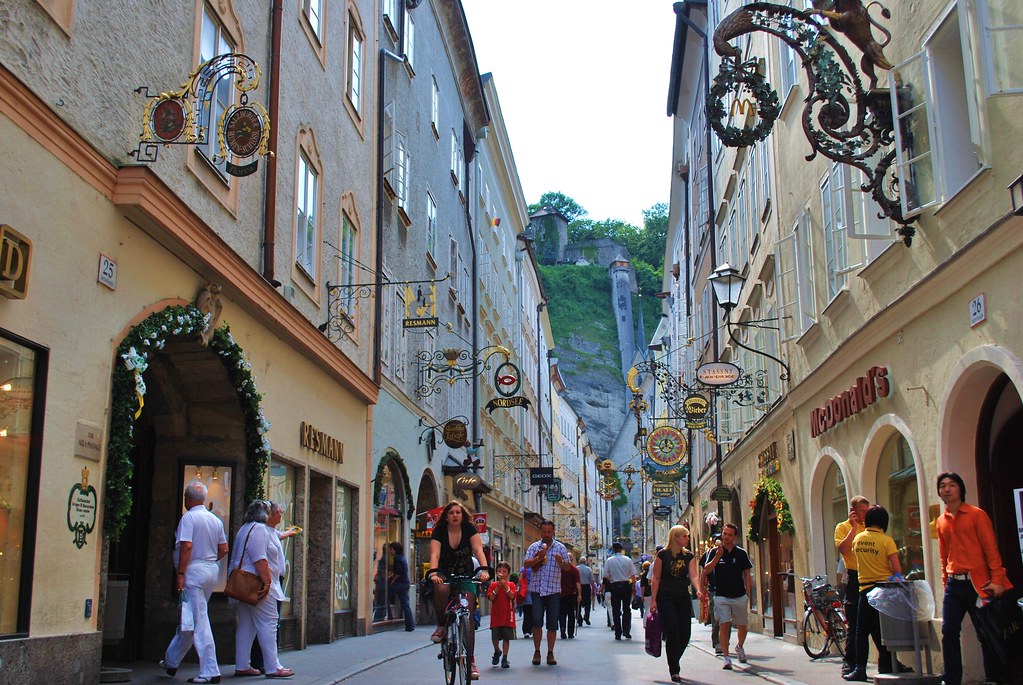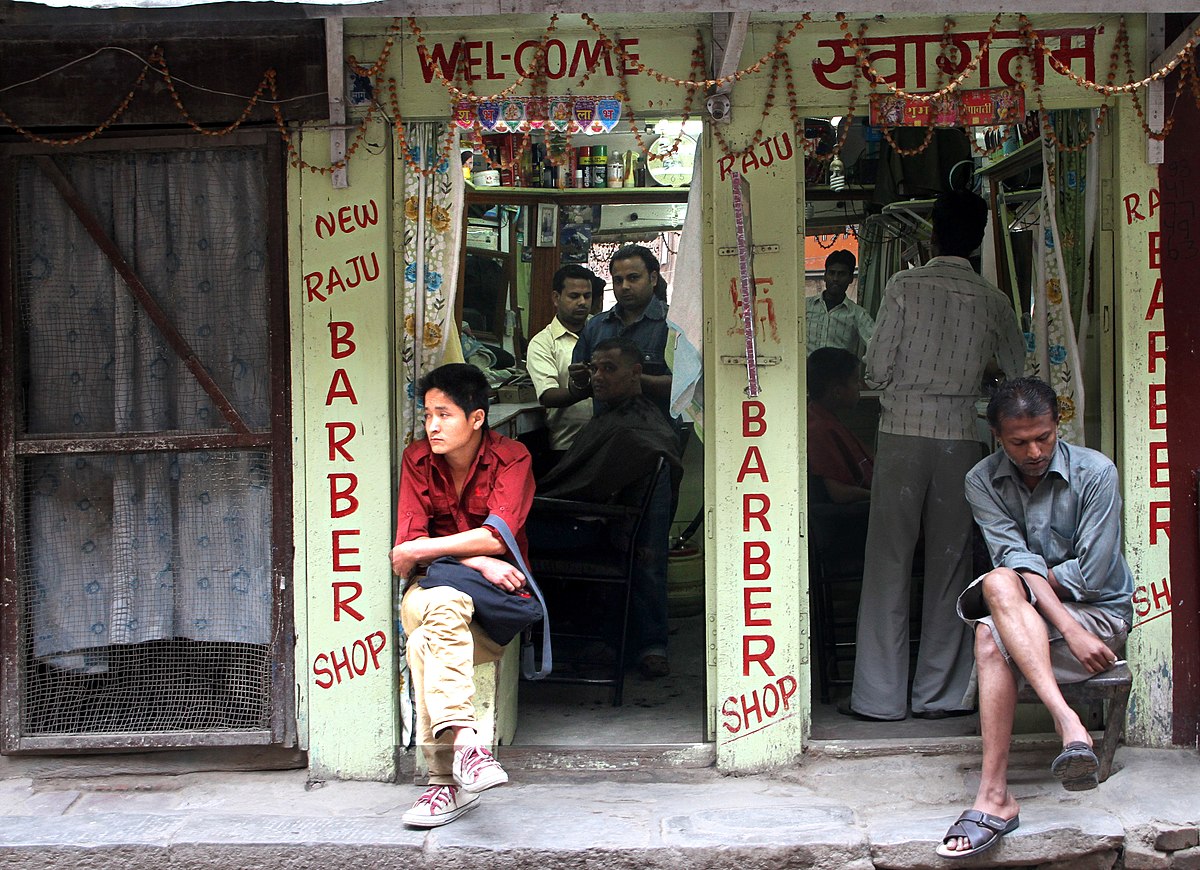The last time I ate at a McDonald’s was about fifteen or so years ago, it was in Salzburg, Austria.

My post-college backpacking through Europe trip was costing me more than I had planned and opting to save my money for delicious beer and schnitzel, I decided that for breakfast I’d shamefully grab a bite to eat in the chain restaurant. While my friend and I consumed our prepackaged fried breakfasts, we decided that it would be the last time that we would ever eat at McDonald’s. Aside from the many health reasons for this decision was the realization that the building adjacent to the one we were in was the birthplace of Wolfgang Amadeus Mozart.
Surely this was the fanciest McDonald’s in which we would ever eat. As are many of the buildings in Salzburg, the outside of this one was clean, laced in gold paint, and an ornate, vintage sign jutted off the front advertising that it was McDonald’s. It could have been a piano shop, or an artisanal cheese shop, a museum even. But no, this block had been penetrated by the most ubiquitous food chain in the world. Imagine us, two Americans opting to eat at what might be the most grotesque display of American globalization there was.
In reality, such globalization is hard to escape when traveling now. Cities from the Americas through Europe and into much of Asia are all becoming alike with more skyscrapers and malls. A few years ago, my wife and I visited a few islands in Greece. It was, of course, absolutely gorgeous and we loved every minute of it. When we went to the famed island of Santorini for a few nights, though, we were amazed to find that it was really just one big mall.

Every building was a hotel, restaurant, or store. It was not what we had come to Greece for (what we were looking for, however, we found in other places like Rhodes and Amorgos). It’s hard to feel that you’ve really lost yourself and experienced something different when you spend your time sandwiched between H&Ms and Uniqlos. No one imagines waking up and people-watching in the narrow streets of a romantic European city sipping Starbucks.
There is a solution, however. A few years ago, I realized that I was planning fewer trips to big cities. Maybe I’d wander around a city for a day or two, but then I’d quickly find myself out in the country. In the country, of course, you’ll find fewer people, fewer tourists, and fewer McDonald’s. Venture out far enough and you’ll often feel like you’ve gone back in time.
A few years ago, I traveled out west to Wyoming and Montana. Driving through the countryside I sat in awe of the beautiful landscape and the people who called it home. There were ranchers in cowboy hats, an image I didn’t really know still existed in America, and as I closed in on Glacier National Park, I passed a boy from the Blackfoot tribe riding a horse bareback into the sunset. I was in America, but I was not in the America of New York’s skyscrapers and congestion.

An escape from globalization doesn’t always need to happen far from a big city, however. I’ve always said that to see the real New York you need to visit the outer boroughs. Take a train uptown to the Bronx and you will find an entirely different New York from the bright lights of Times Square. Whenever I have a friend who visits New York I make sure they come up to the the Bronx. We eat delicious meals in outdated diners and from tiny bodegas. My friend puts on a monthly concert series in the backyard of an old Irish bar. I make sure to bring them to one if I can. It might not have the glamour of a Disney inspired Broadway show, but it has real New Yorkers enjoying local bands on their day off. It’s a more accurate depiction of New York than most other places they’d visit.
Something strange that I would also suggest is to do something ordinary that you can do at home. One of the most surprisingly culturally authentic experiences I had in Nepal was when I got a haircut.

My birthday was coming up and I wanted to look nice and I vaguely remembered someone telling me I just had to get a haircut in Nepal. I pulled into a small shop off a dirt road in Kathmandu and so much seemed familiar when I sat down: the chair, the mirror, the equipment. There were minor differences, too. The décor, for one, had pictures of Hindu gods on it. But the real difference came after the haircut. In Nepal, a haircut also gets you a full head massage. I was even told a rumor that you aren’t allowed to drive afterward because the massage puts you in such a daze that you wouldn’t possibly be able to do that responsibly, and I believe it. It was a mood-altering Zen-state inducing massage.
The entire experience was topped off with a facial cream meant to whiten one’s face. As it turns out, having tan is an indication that one works outside, which they feel is synonymous with being poor. I was thrilled with my tan so you can imagine how disappointed I was to see it fade so quickly. But I appreciated that the barber didn’t treat me differently from his usual clientele. My northern European skin needs no assistance in looking white, but he gave me the cream anyway like everyone else. No one travels with the idea of getting a haircut at a small local barber shop but such an experience can be deeply unique.
It is, in a way, selfish to be upset at the globalization of other countries. Those places, too, deserve to do well. The shameful part is that the economic uplift often comes at the cost of the local culture. The streets of Salzburg should not be lined with cheap retail stores, although its citizens deserve cheap prices. But as travelers we crave authenticity. Really, what did I expect to find in 2007, women in hoop skirts and men with frilly collars and knee-high socks? For such simulacrum I could just go to Disney’s Epcot.
We travel to experience something new, not to eat from the same restaurants we dine from at home, and globalization can make that hard. To fully experience a place in 2021 we need to embrace both the traditional and the new, the local and the global, because it is in the mix of all of those things that we will find authenticity.

In France I saw knights battle it out with swords on the lawn of a castle while maidens cooked meals over open fires; not exactly something I can see every day, but neither is it an accurate depiction of France.
After college I spent a summer in Sri Lanka teaching at a Catholic school. I lived with the brothers in their house in Colombo and one brother in particular was in charge of the grounds, which also meant he was in charge of making sure I was okay. On my last night he told me that he would take me to a great place to eat. It had food from all over the world, he promised. I tried to imagine such a magical place, I pictured a market with outdoor tables and vendors from all over. We hopped in a tuk-tuk and zoomed in and out of traffic. Occasionally we passed an ox pulling a cart in the middle of a busy street. Above us were small white flags draped over the street, signifying a death in the neighborhood, and even further up was the neon glow of Carlsburg advertisements.

When we arrived, I realized that we were at the food court at the mall and I was briefly disappointed. But it was clear that this was his favorite place to eat. The Thai food took him back to his time in Thailand, the fish and chips shop brought him back to his college days in London. He was giddy. A little while later I noticed some of my students. They came over to say hi and bought popcorn that we all shared. I quickly came to understand that they were there to meet girls and so much resembled my own time in high school. I’m not sure that I would have chosen a mall to spend my last day in, but sitting there with no other westerner in sight, sharing popcorn with awkward high school boys trying to impress girls, I knew I was looking at something real.












